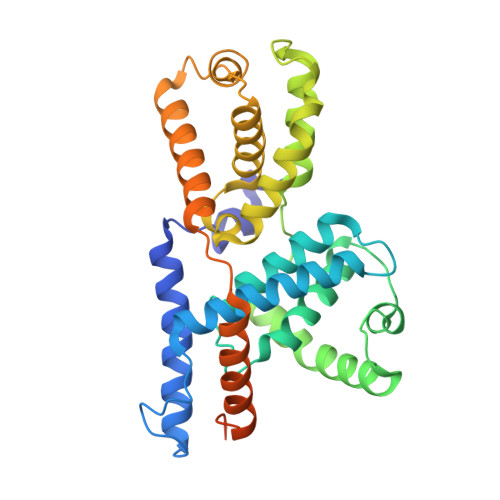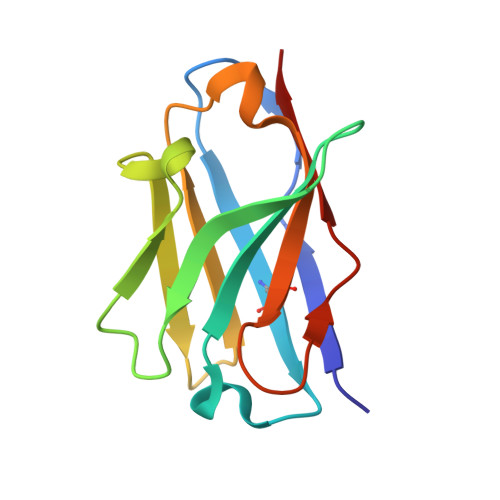Structural basis of Cdk7 activation by dual T-loop phosphorylation.
Duster, R., Anand, K., Binder, S.C., Schmitz, M., Gatterdam, K., Fisher, R.P., Geyer, M.(2024) bioRxiv
- PubMed: 38405971
- DOI: https://doi.org/10.1101/2024.02.14.580246
- Primary Citation of Related Structures:
8PYR - PubMed Abstract:
Cyclin-dependent kinase 7 (Cdk7) occupies a central position in cell-cycle and transcriptional regulation owing to its function as both a CDK-activating kinase (CAK) and part of the general transcription factor TFIIH. Cdk7 forms an active complex upon association with Cyclin H and Mat1, and its catalytic activity is regulated by two phosphorylations in the activation segment (T loop): the canonical activating modification at T170 and another at S164. Here we report the crystal structure of the fully activated human Cdk7/Cyclin H/Mat1 complex containing both T-loop phosphorylations. Whereas pT170 coordinates a set of basic residues conserved in other CDKs, pS164 nucleates an arginine network involving all three subunits that is unique to the ternary Cdk7 complex. We identify differential dependencies of kinase activity and substrate recognition on individual phosphorylations within the Cdk7 T loop. The CAK function of Cdk7 is not affected by T-loop phosphorylation, whereas activity towards non-CDK substrates is increased several-fold by phosphorylation at T170. Moreover, dual T-loop phosphorylation at both T170 and S164 stimulates multi-site phosphorylation of transcriptional substrates-the RNA polymerase II (RNAPII) carboxy-terminal domain (CTD) and the SPT5 carboxy-terminal repeat (CTR) region. In human cells, Cdk7-regulatory phosphorylation is a two-step process in which phosphorylation of S164 precedes, and may prime, T170 phosphorylation. Thus, dual T-loop phosphorylation can regulate Cdk7 through multiple mechanisms, with pS164 supporting tripartite complex formation and possibly influencing Cdk7 processivity, while the canonical pT170 enhances kinase activity towards critical substrates involved in transcription.
Organizational Affiliation:
Institute of Structural Biology, University of Bonn, Venusberg-Campus 1, 53127 Bonn, Germany.




















